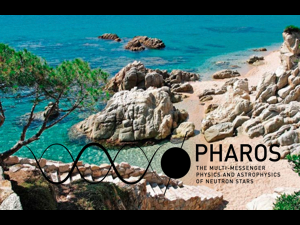Speaker
Mr
Frank Chambers
(University of Amsterdam)
Description
Accreting neutron stars (NS) can exhibit high frequency modulations in their lightcurves during thermonuclear X-ray bursts, known as burst oscillations. These frequencies can be offset from the NS spin frequency by several Hz (known independently) and can drift by 1-3 Hz. One plausible explanation is that a wave is present in the bursting ocean that decreases in frequency (in the rotating frame) as the burst cools, hence explaining the drifts - the strongest candidate is the buoyant r-mode. Future X-ray missions aim to use the burst oscillation phenomenon to measure NS parameters; this effort would be helped by a more accurate understanding of the underlying mechanism. To date, models that calculate frequency and drift during these bursts include realistic composition and temperature evolution but have not yet taken into account relativistic effects known to be important from simpler modelling. In this talk, I present a relativistic calculation of a buoyant r-mode in a NS ocean for several ocean equations of state. I also compare to a Newtonian calculation to demonstrate the change in including these effects.
Primary authors
Dr
Anna Watts
(University of Amsterdam)
Mr
Frank Chambers
(University of Amsterdam)

